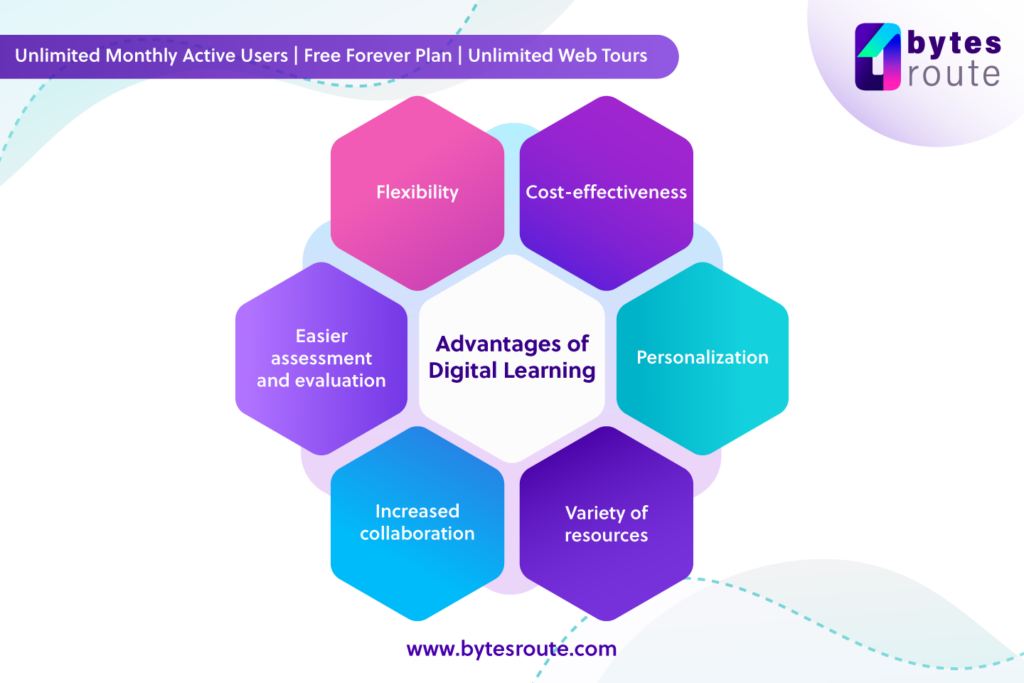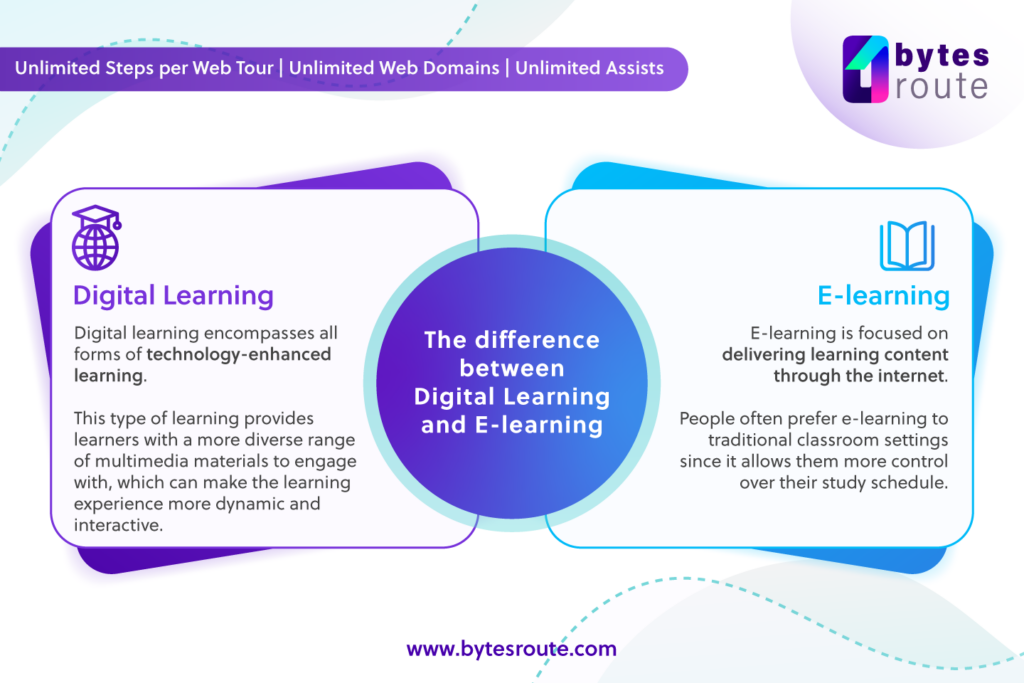What is Digital Learning?
In its broadest sense, the term “digital learning” encompasses any form of education that make use of digital technologies. Therefore, digital learning encompasses all that students do with or via the use of digital resources. Digital learning includes not only taking classes online but also doing research online, watching videos online, and even using digital tools and gadgets in a face-to-face setting with an instructor.
What are the advantages of digital learning?

Digital learning has several advantages over traditional classroom-based education:
- Flexibility: One of the biggest advantages of digital learning is the flexibility it offers. Students can learn on their own schedule and in a location that is convenient for them. This makes it a popular choice for working professionals, people living in remote areas, and anyone looking to further their education while balancing other responsibilities.
- Accessibility: Digital learning can make education more accessible to a wider range of people. Online courses and other digital learning resources can be accessed from anywhere with an internet connection, which is particularly useful for people in remote or under-served areas. This is a huge advantage, as it brings learning closer to many more people.
- Cost-effectiveness: Many digital learning options, such as online courses, can be more cost-effective than traditional classroom-based education. This is because online programs often have lower overhead costs and can be delivered to a larger number of students.
- Personalization: Digital learning can also be personalized to fit the needs of individual students. For example, an online course can include interactive quizzes and other features that can help students learn at their own pace and focus on the areas they need to improve.
- Variety: Digital learning can be delivered in a variety of formats, such as video lectures, written materials, and interactive quizzes, that make learning more fun and helps in retaining knowledge.
- Variety of resources: The digital environment provides a wealth of resources, such as videos, podcasts, webinars, interactive quizzes, and much more, which can be accessed 24/7 and help the student explore the subject more.
- Increased collaboration: Digital tools such as virtual classrooms, discussion boards, and collaboration platforms can also help to foster collaboration and communication among students and teachers, regardless of their location.
- Easier assessment and evaluation: Digital learning also makes the assessment and evaluation of students easier. For example, online quizzes, tests, and exams can be automatically graded, saving time and resources.
Overall, digital learning has many advantages over traditional classroom-based education, and it has become increasingly popular in recent years as technology has advanced and internet access has become more widely available. However, it is important to note that digital learning is not a replacement for traditional classroom education, and both have their own advantages and disadvantages.
What is the difference between digital learning and e-learning?
The terms “digital learning” and “e-learning” are often used interchangeably, but they can refer to slightly different concepts.

“Digital learning” is a broad term that can be used to describe any type of education that is taught or helped by digital technology. This includes a wide range of formats, such as online courses, webinars, virtual classrooms, and digital textbooks, as well as other forms of education that use digital tools and resources.
“E-learning,” on the other hand, is a more specific term that typically refers to education that takes place over the internet. This can be done through online courses, webinars, and virtual classrooms, among other things.
Both digital learning and e-learning share the same fundamental principle, which is the use of technology to support and deliver education, but e-learning is a subset of digital learning since all e-learning is digital learning but not all digital learning is e-learning.
Overall, the main difference between digital learning and e-learning is in the scope and definition of the terms. Digital learning is a broad term that encompasses all forms of education that use digital technology, while e-learning specifically refers to education that takes place over the internet.